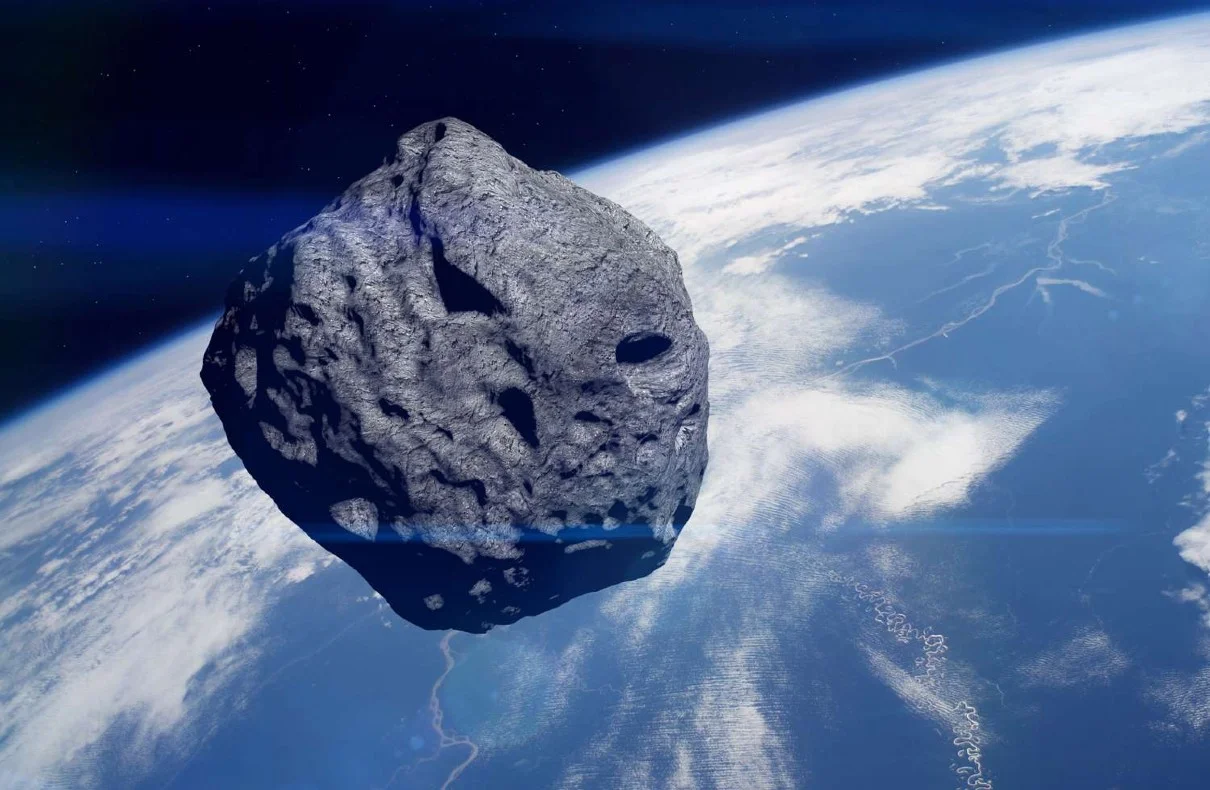A stadium-sized asteroid that will pass near to Earth tonight has prompted a warning from NASA. The space rock, designated 2024 ON, is categorized as a Near-Earth Object (NEO) and is roughly 950 feet (290 meters) long.
Its closest approach will be at a safe distance of more than one million kilometers, so even with its size, the space agency has guaranteed that there is no immediate fear of collision with our planet.
NASA’s Jet Propulsion Laboratory (JPL) has indicated that, although this is a “close approach,” the asteroid will not come closer than 1 million kilometers, which puts it at a distance greater than that between Earth and Mars or Venus. Despite its large size, which makes it 99% larger than other near-Earth objects, telescopes will be necessary to observe it due to the considerable distance that separates it from our planet.
Asteroid 2024 ON is traveling at an astonishing speed of 31,666 kilometers per hour (approximately 25 times the speed of sound), making it an entity to be taken into account when monitoring nearby objects. NASA has classified this celestial body as a “potentially dangerous” asteroid, due to its size and relative proximity to Earth’s orbit, although they emphasize that on this occasion there is no risk of impact.
According to JPL, NEOs are comets and asteroids that have altered their orbits to enter Earth’s “neighborhood” because of the gravitational attraction of other planets. The space agency defines potentially dangerous as any object greater than 150 meters that passes within 7.5 million kilometers of Earth’s orbit; this does not imply that the object is a direct threat.
There is no stranger in the solar system than asteroid 2024 ON. The last close encounter this space rock had with Earth was in 2013, and its next close encounter is scheduled for 2035. NASA’s current simulations indicate that, despite its periodic orbit, Earth will not be seriously endangered in the next few decades.
In a study, NASA’s Solar System Ambassador Brenda Culbertson explains how near-Earth asteroids like 2024 ON are continuously tracked for changes that can raise the likelihood of an impact. “These celestial bodies are natural objects that help us better understand our cosmic environment,” Culbertson stated, emphasizing that there is currently no appreciable risk of a near-term collision with a huge asteroid.
As part of the monitoring operations for asteroid 2024 ON, astronomers and amateur astronomers have been observing celestial phenomena in real time through the Virtual Telescope Project. The program took photos of the asteroid on September 9 as it swiftly sped by.
By making better computations of the object’s orbit, these observations aid scientists in making more accurate forecasts in the future.
Apart from 2024 ON, four additional asteroids, with sizes varying from a home to an airplane, have also been spotted in close proximity to Earth in the past few weeks. The nearest of these asteroids, according to NASA, passed by yesterday at a distance of roughly 524,000 kilometers, which is still regarded as safe.
Through its Center for Near-Earth Object Studies (CNEOS), NASA keeps a close eye on all NEOs. CNEOS is in charge of analyzing the objects’ orbits and determining the likelihood of a collision. CNEOS, run by JPL, makes use of information gathered by amateur astronomers and observatories worldwide.
Missions like NEOWISE, which tracks asteroids from space, and planetary radars like the Goldstone Solar System Radar Array supplement this continuous monitoring.
Based on current information, NASA has reaffirmed in its most recent statement that there is no considerable threat of big asteroid impacts during the next 100 years. On the other hand, they emphasize how crucial it is to train space agencies and disaster response agencies through impact simulations so that they are ready for any eventuality.
Furthermore, the organization has initiated the NEO Surveyor project, which seeks to enhance the ability to identify potentially hazardous asteroids. Launched in the next few years, this mission is intended to identify up to 90% of NEOs that approach Earth dangerously.
